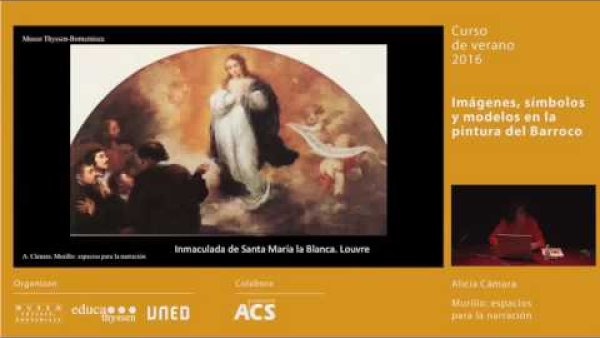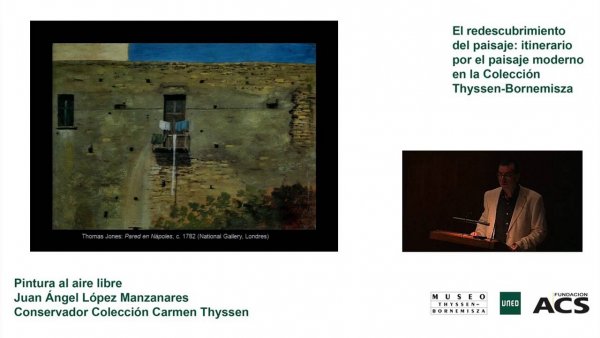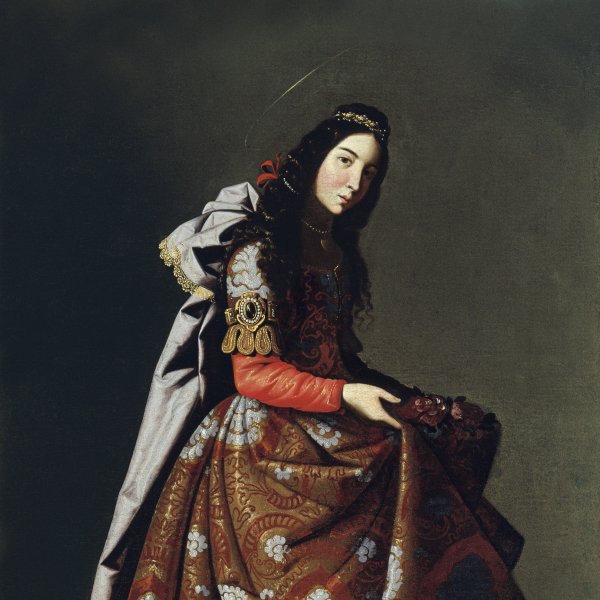The Virgin and Child with Saint Rose of Viterbo
Together with The Adoration of the Magi, now in the Toledo Museum of Art, Ohio, The Virgin and Child with Saint Rose of Viterbo was acquired in Spain by Mr Stanhope, later Lord Harrington, the British Ambassador in Madrid, and was to be found in his collection in the UK in 1729. The canvas passed down through his family and in 1883 was at Belvoir Castle, home of the dukes of Rutland. It was auctioned from that collection at Christie’s in London in 1926. In 1930 the two paintings were in the Contini-Bonacossi collection in Florence where they were recorded by Longhi and Mayer. However, only The Virgin and Child with Saint Rose of Viterbo was acquired for the Thyssen-Bornemisza collection in 1968 through the Jolanda D’Antoni gallery in Rome, having previously been in the possession of Count Alessandro Contini-Bonacossi. In the 1969 catalogue of the Thyssen-Bornemisza collection the entry by Rudolph Heinemann suggested that the painting might originally have been in the Capuchin monastery in Seville. This idea was rejected by Diego Angulo who considered that there was no real evidence for this hypothesis.
The girl in this painting has mistakenly been identified in previous catalogues of the Thyssen-Bornemisza collection and in various publications of the 1980s as Saint Rosalia of Palermo, a hermit who dwelled in a cave near Palermo, where she led an ascetic life, and whose attributes include white roses. The girl in this work by Murillo is Saint Rose of Viterbo, a Franciscan tertiary who died in the mid-thirteenth century and is also identified by the roses she usually carries in a basket or in the folds of her dress. Here her identity is further borne out by the secondary scene on the left where Saint Rose preaches to a crowd – an unusual action for someone of her age and a distinctive episode in her life.
The canvas has been dated to around 1670 or slightly after, corresponding to Murillo’s mature period. Its large size suggests that it was painted for an altar, and it uses a classical, triangular composition of a harmonious type to depict the principal figures on a large scale in the foreground. The group of the saint, the Virgin and the Infant Christ are accompanied on the right by four virgin martyrs with their palm branches, dressed in pure white tunics. Balancing this group at the upper left is another one of four small angels in the sky who witness the principal scene. The loose brushstrokes that sketchily define the forms, particularly evident in the four martyrs and the small angels, and the emotional mood created by the gazes, gestures and poses of the principal group, make this canvas a fine example of Murillo’s work with its characteristic softness and delicacy that was so highly appreciated. Around the time that he painted this canvas Murillo had completed the second group of paintings for the Capuchin monastery in Seville and had begun work on the Hospital de la Caridad in the same city.
A canvas in the Wallace Collection in London has been related to the present painting due to the similarity of the composition. In the London painting, in which the composition is reversed, the Virgin is depicted half-length and Saint Rose bust-length. The pose of the Christ Child in that work is different to the present one as he is seated astride the Virgin’s knees and clutches Mary’s tunic with one hand while with the other he grasps a rose held out to him by the saint. There is also a preparatory drawing that relates to the London painting, now in the Biblioteca Nazionale in Turin, in which the whole composition is included. In the drawing the saint has loose hair falling around her shoulders and a rosary that hangs from the belt of her habit. These details led Diego Angulo to suggest that the painting in the Wallace Collection might reproduce a lost original by Murillo. He also mentioned copies of the present painting, in the collections of the duque de Fernán Núñez and the marqués de Saltillo, both in Madrid, as well as one in a private collection in Utrera.
Mar Borobia











